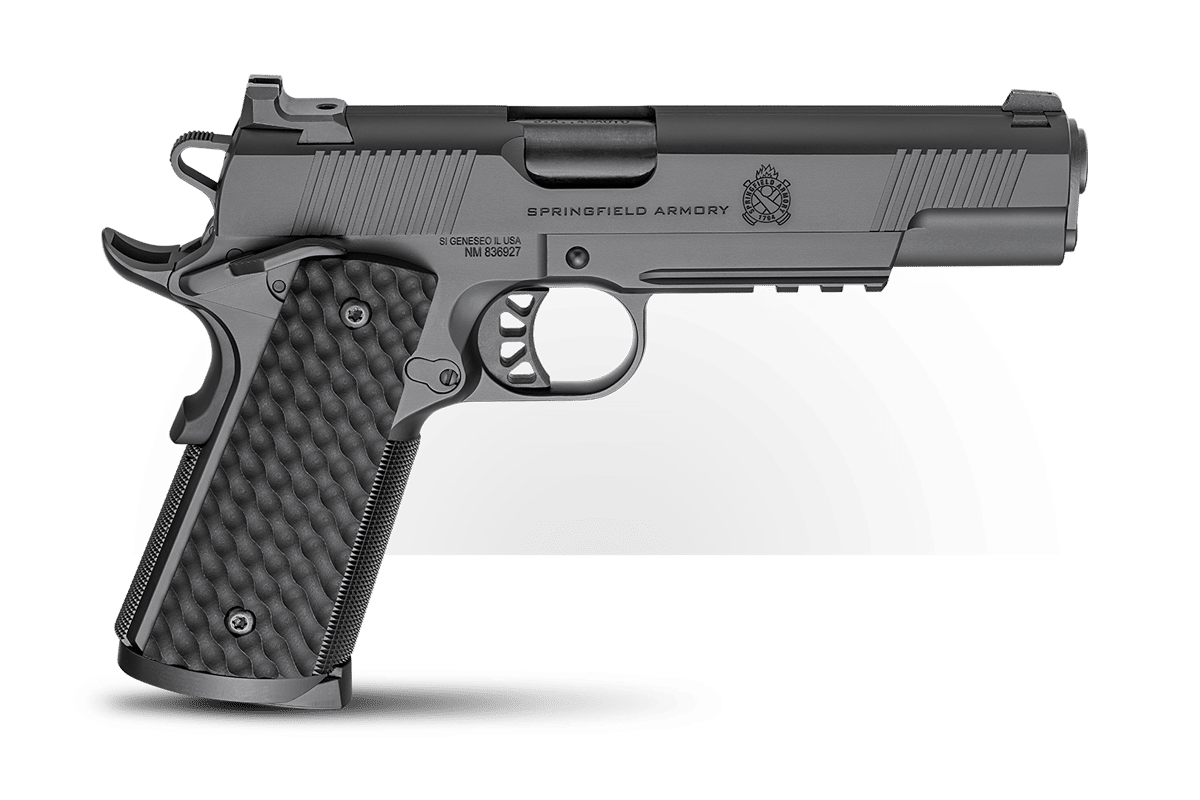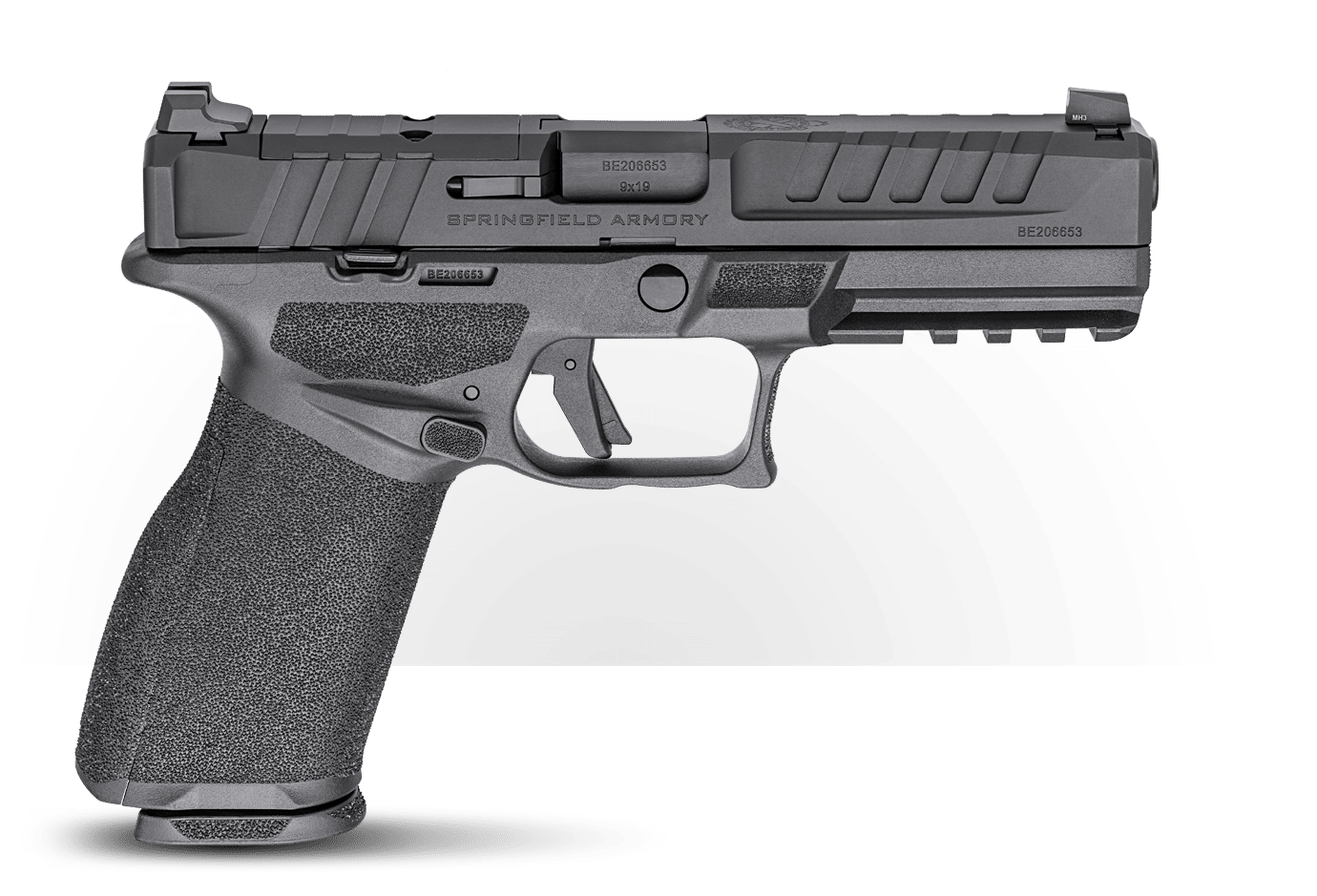Ayoob: The Springfield Armory Shootoff

You’re standing behind a fence 25 feet from the target array, your hands tight around the grip of a Springfield Armory 1911-A1 .45, as you hear the commands from the range control tower above and behind you.
“Timers ready! Guns on the rail! Shooters ready…” and then the loud electronic beep whose message is, “GO!”
You raise the pistol and bring the black front sight onto the stark white of the target as you press the trigger. The expansion chamber recoil compensator at the muzzle softens the “kick” as the target flies back from your bullet and disappears from view. You are already sweeping the gun to the next target, aware of the gunfire of your competitors around you. You fight the urgency as you focus on the front sight, and the task … .
It is June 10, 2025, and you are competing in the very first Springfield Armory Shootoff in Central Lake, Michigan.
In the mid-1970s, this quaint little resort town became a landmark on the handgun competition pro tour when Richard Davis founded the sport of bowling pin shooting with his Second Chance event there.
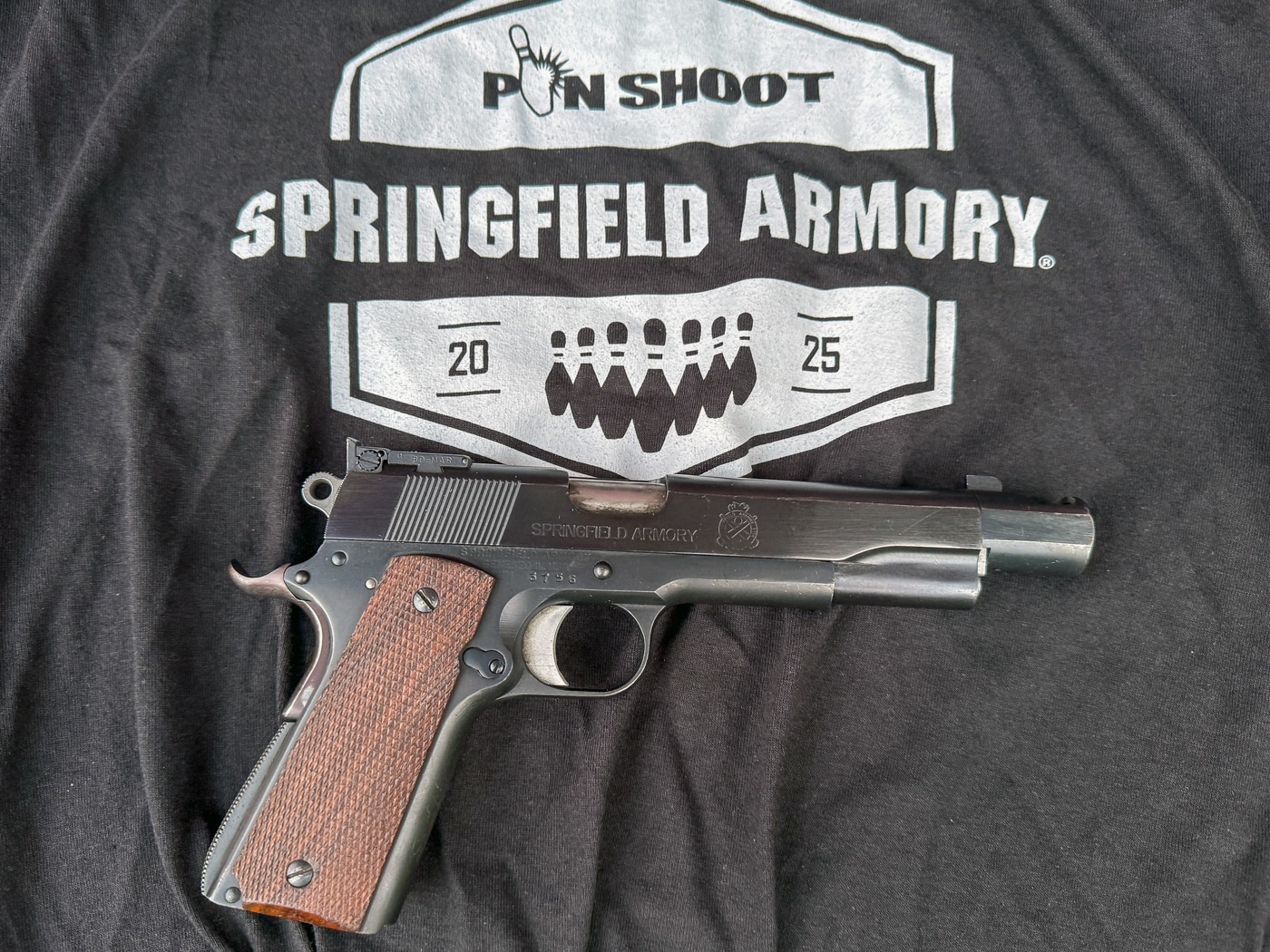
The inventor of the soft body armor that would go on to save countless police lives, Davis had wanted to create an event that would encompass Jeff Cooper’s concept of DVC. Diligencia, Vis, Celeritas. Accuracy, power and speed. Accuracy because the target, a wooden bowling pin, was about the size of the area between the solar plexus up through the heart and the cervical spine. Power because it took some serious handgun ammunition to manage the assigned task of blasting a heavy tenpin three feet back off a table. And speed, because the winner would be the person who blew five of them onto the ground the fastest.
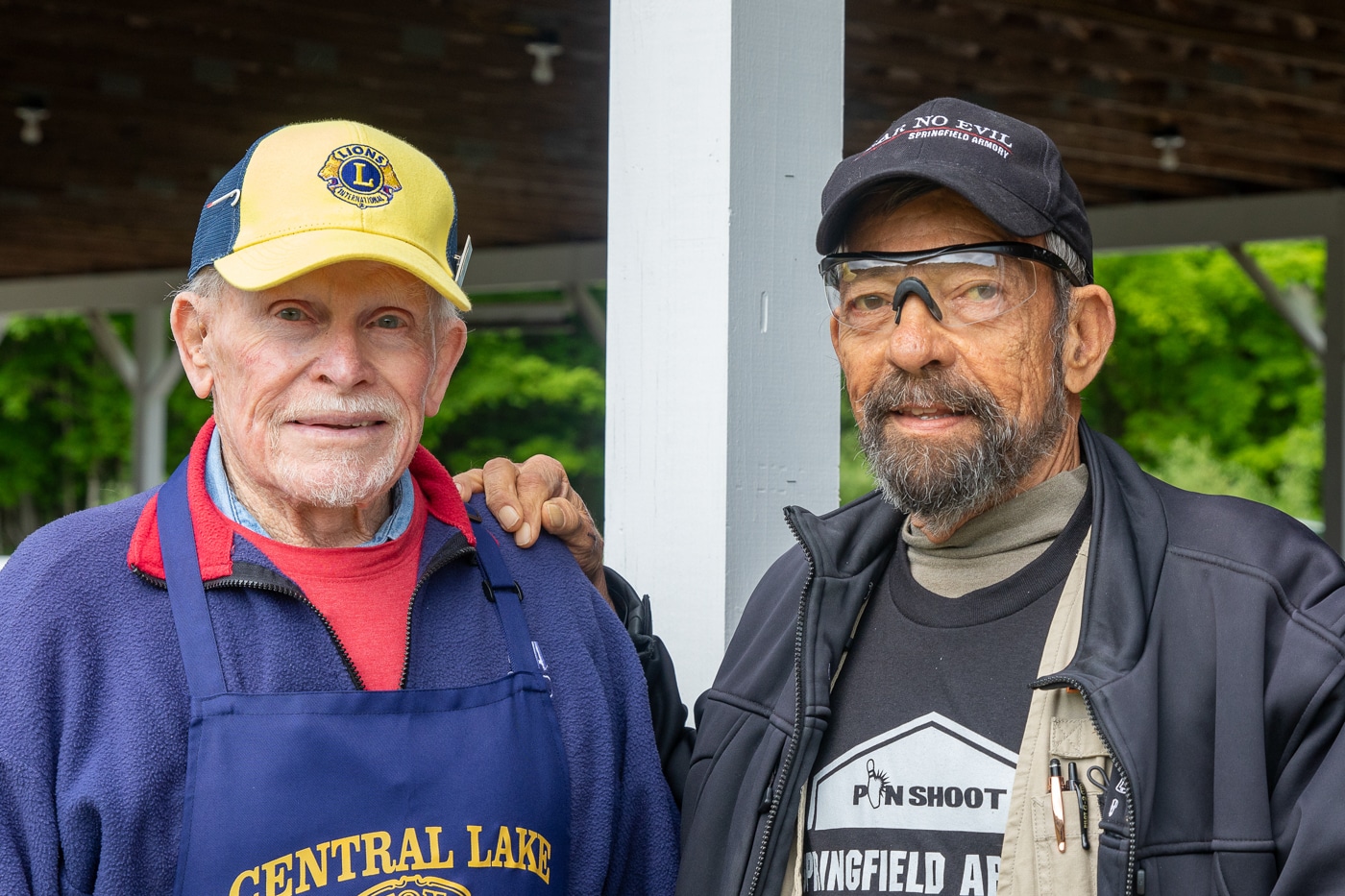
The match lasted until 1998, and was resurrected as The Pin Shoot in 2017. For the last several years, Springfield Armory has been the primary sponsor. In appreciation, Matt Davis, the founder’s son and current match director, decided for 2025 to have a special Springfield-centric event. Thus, the Springfield Armory Shootoff was born.
The Shootoff Concept
In the regular main events at the Pin Shoot, the contestant gets six runs at five-pin tables, each timed by several timers with stopwatches. The best five times go on the record, and the worst becomes a throwaway. Thrown away from the main score, at least; it remains on the record as a tie-breaker. You’ll know how you did compared to everyone else when the scores are posted, just like usual at a USPSA, IDPA, or even bullseye match.
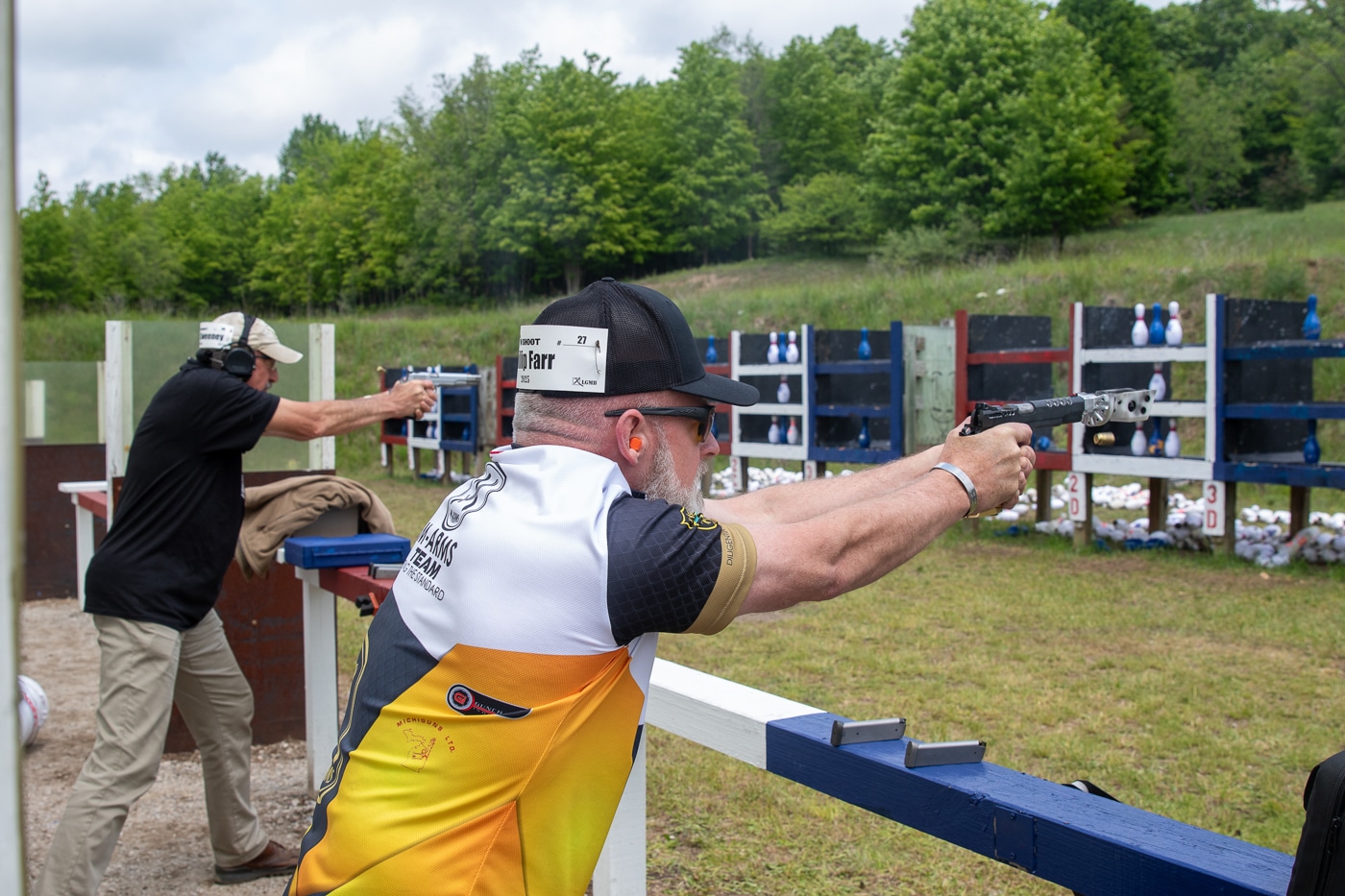
The shootoff works differently. You and your immediate opponents are right there together on the line, pretty much shoulder to shoulder. Everyone will know very quickly who cleared all their targets the fastest.
And … oh, yeah … there’s the small matter of the audience.
Before the Eyes of the Audience
The Pin Shoot is the rare match where there are bleachers arrayed on the hillside behind the firing line. At the Springfield Armory Shootoff, there were dozens and dozens of people watching every contest.
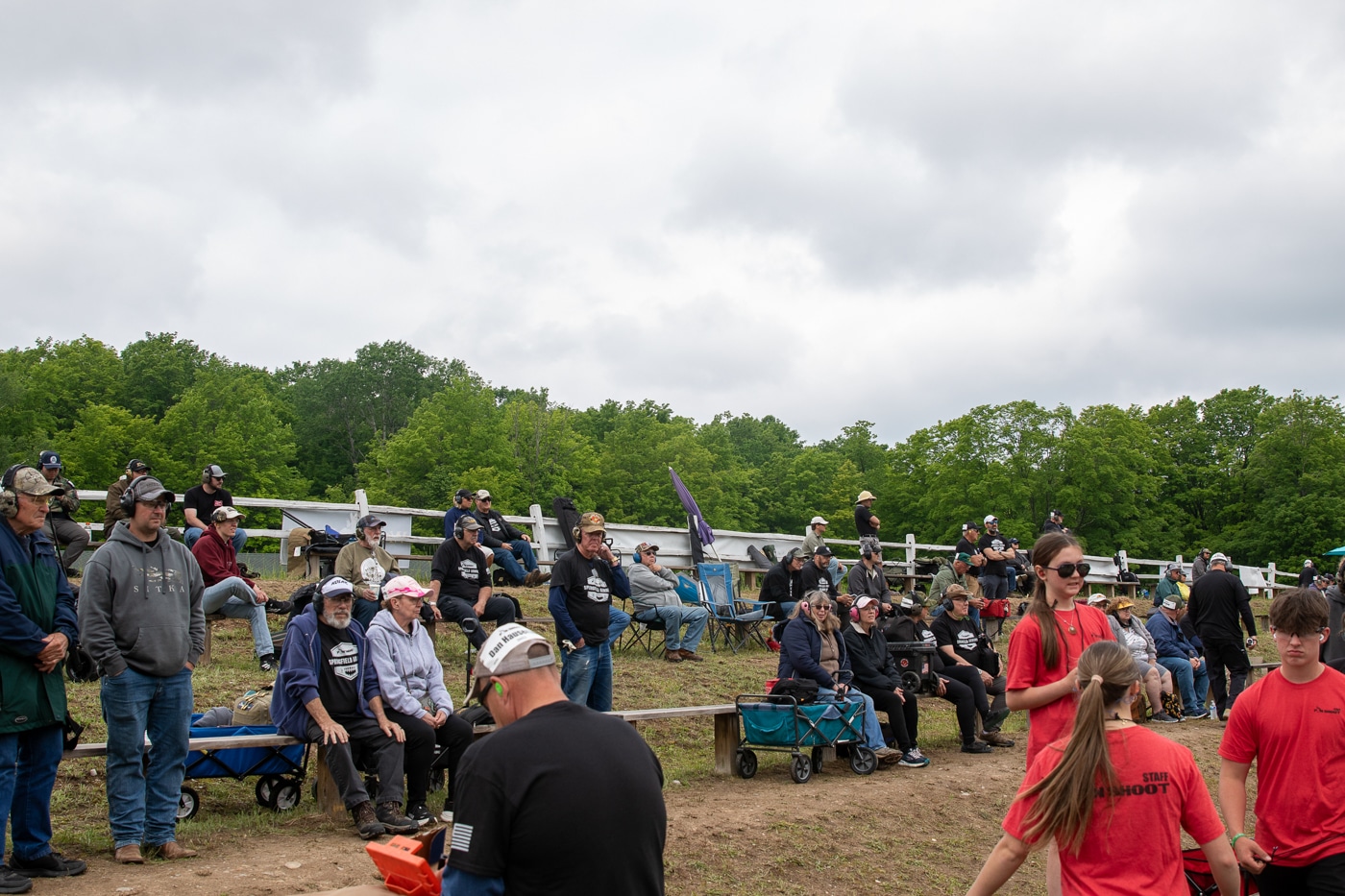
Pin shooting is an extremely visual sport. A missed shot is glaringly obvious to the audience. So is a pin that has only been tipped over and is rolling around on the table, still needing to be shot off. And so is a tip-over of a “hostage pin,” painted blue, which costs the shooter a five-second penalty added to his or her score.
It will give you your daily adrenaline requirement if you’re on the firing line.
Shots Fired
The match began promptly at 1pm, after everyone had feasted at the Springfield Armory Pavilion on baked chicken and all the accoutrements, prepared every day of the six-day Pin Shoot by the Central Lake Lions Club.
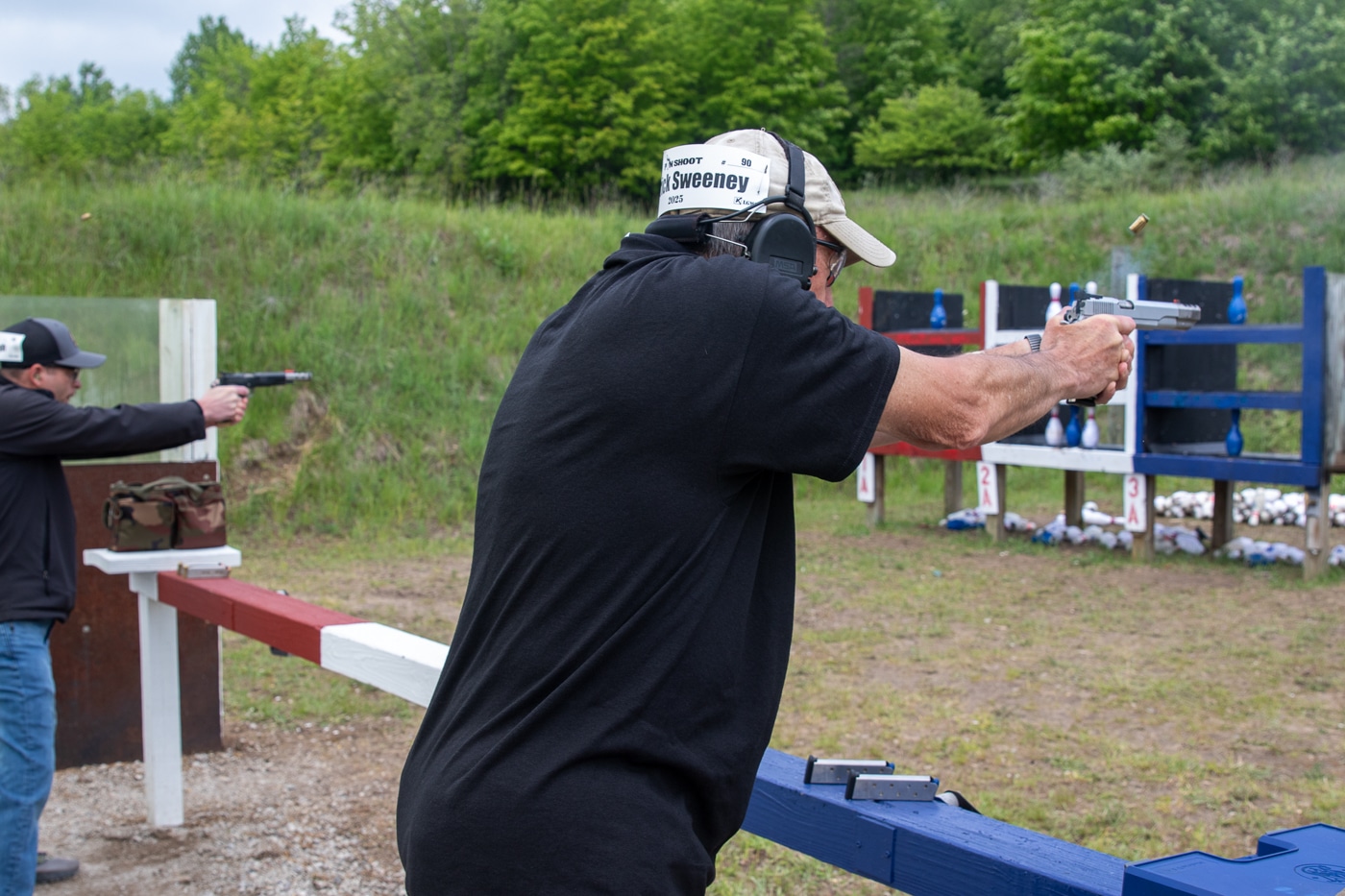
Among the servers was Al Burnett, born right there in Central Lake 88 years ago and returned there after retirement from two careers — first on the Michigan State Police and then as senior firearms and tactics instructor at the Federal Law Enforcement Training Center in Brunswick, Georgia. Along the way, Al won the National Police Champion title many times at Camp Perry. You meet great shooters at the Pin Shoot, and they aren’t all there just to compete.
OSS shot first. In Pin Shoot parlance, OSS stands for Ordinary Standard Shooters as distinct from MB, the Master Blasters who have distinguished themselves with high-level performances in past pin matches here. It’s the Davis’ way of leveling the playing field, so new shooters don’t have to compete directly against the professionals.
The long firing line is full, the competitors shoulder to shoulder. They shoot three at a time to start. It’s “single elimination”; lose once and you’re off the firing line and back in the audience. The winner of each heat advances to the next to shoot against other winners until one is “the last one standing,” the only one unbeaten.
The shootoff begins. Male and female, young and old and in between. Revolvers and autos. Veteran pin shooter Pat Higgins is shooting from a wheelchair, and the audience cheers him on.
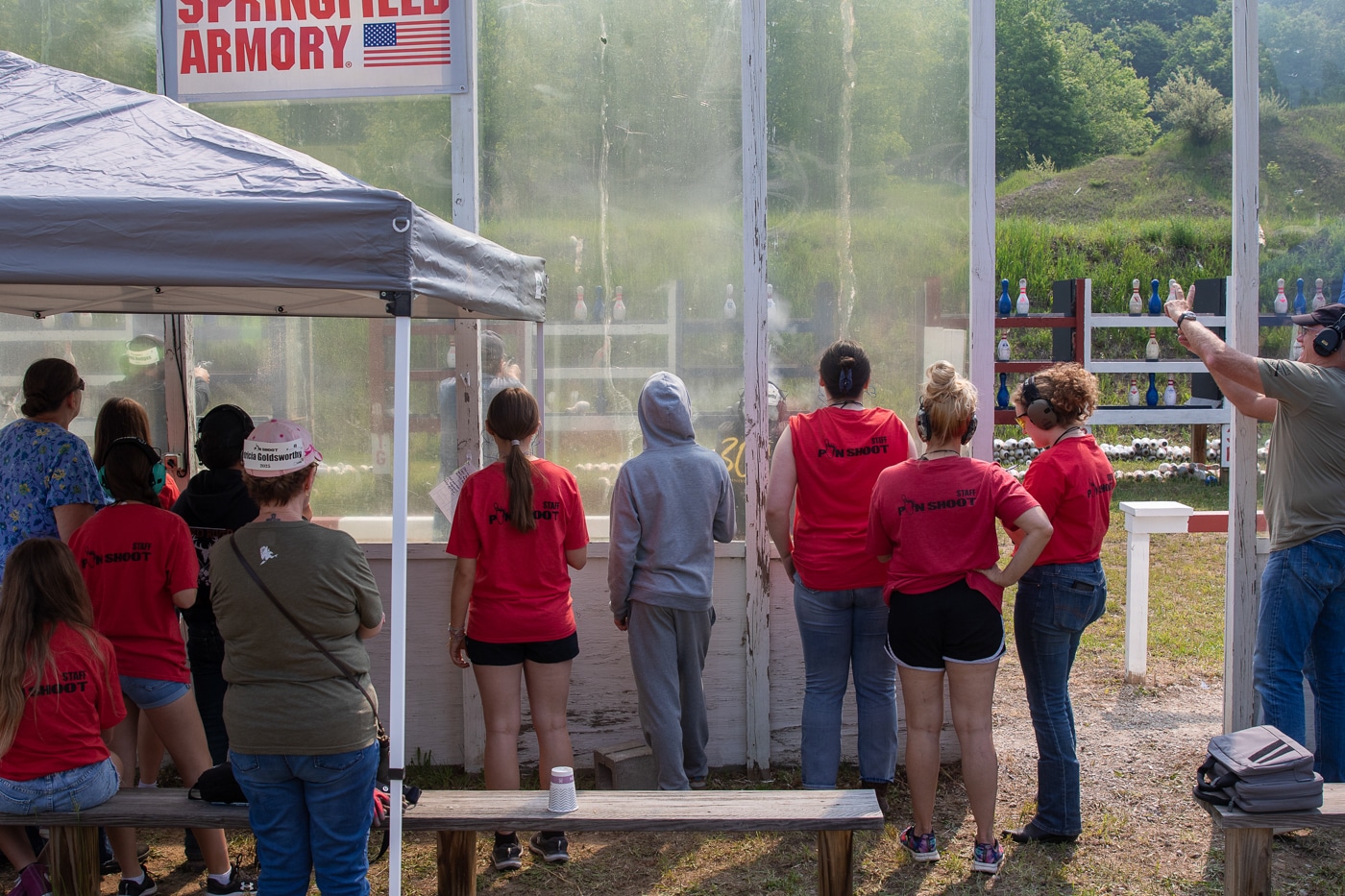
Tension builds. Some contestants’ pistols fail them. One shooter’s auto locks up in mid-string, knocking him out of contention. I’m told later it was an overlength handload. Retired lawman and police academy instructor Herman Davison, a regular here and several times New Hampshire state champ, is fighting cancer but still shooting well until his .357 revolver locks up on him.
Stepping It Up
The field narrows quickly, two shooters out for every one staying in on each subsequent heat. As it goes into the semi-finals, Matt Davis announces it will be two-man shootoffs from here on out to enhance the excitement.
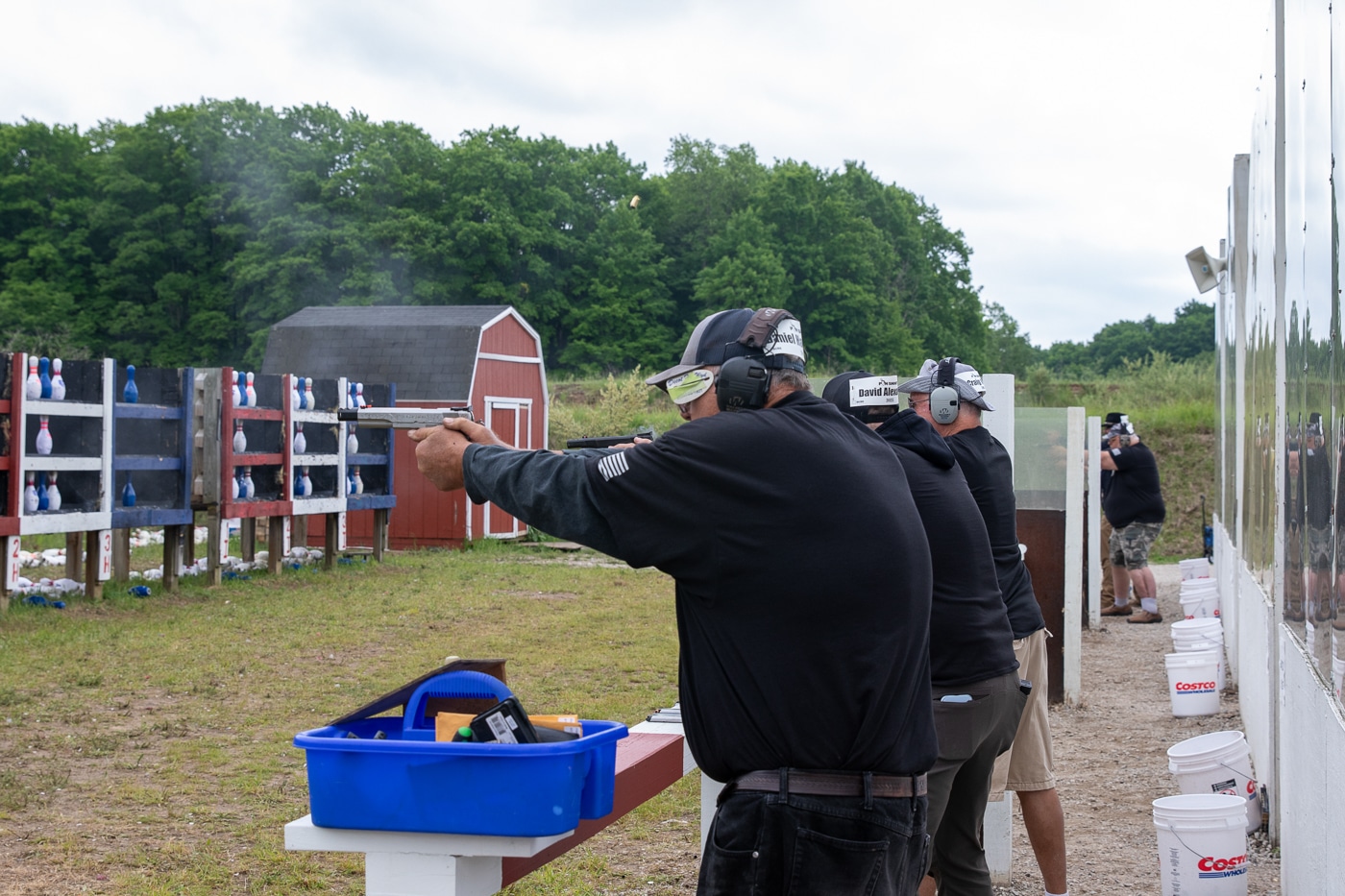
The audience is responsive. When a pin is hit badly and knocked into a bad roll that requires multiple extra shots to take it off, there is a sympathetic collective moan from the bleachers. More than once, both contestants race too fast and still have “deadwood” on the table when their allotted eight rounds are depleted. At those moments, the audience erupts: “Reload!” they yell. “Keep going!”
Many of the pairings are close. Onlookers roar simultaneously as Ryan Rex and his opponent, both shooting Springfield Armory 1911s, appear to have a dead tie, a photo finish. It was in anticipation of this that each shooter had multiple timers on them. We all wait as the timers cluster and chief timers average their times. Finally, the tie-breaker announcement comes: Ryan’s last pin has hit the ground two-tenths of a second ahead of his opponent’s, and he’s the one who’ll go on into the OSS finals to face the also-unbeaten David Alexander.
And Rex will win that final confrontation, becoming the champion OSS shooter.
Next Level
Now it’s time for the Master Blasters. As expected, the duels are faster. These experienced shooters miss fewer pins.
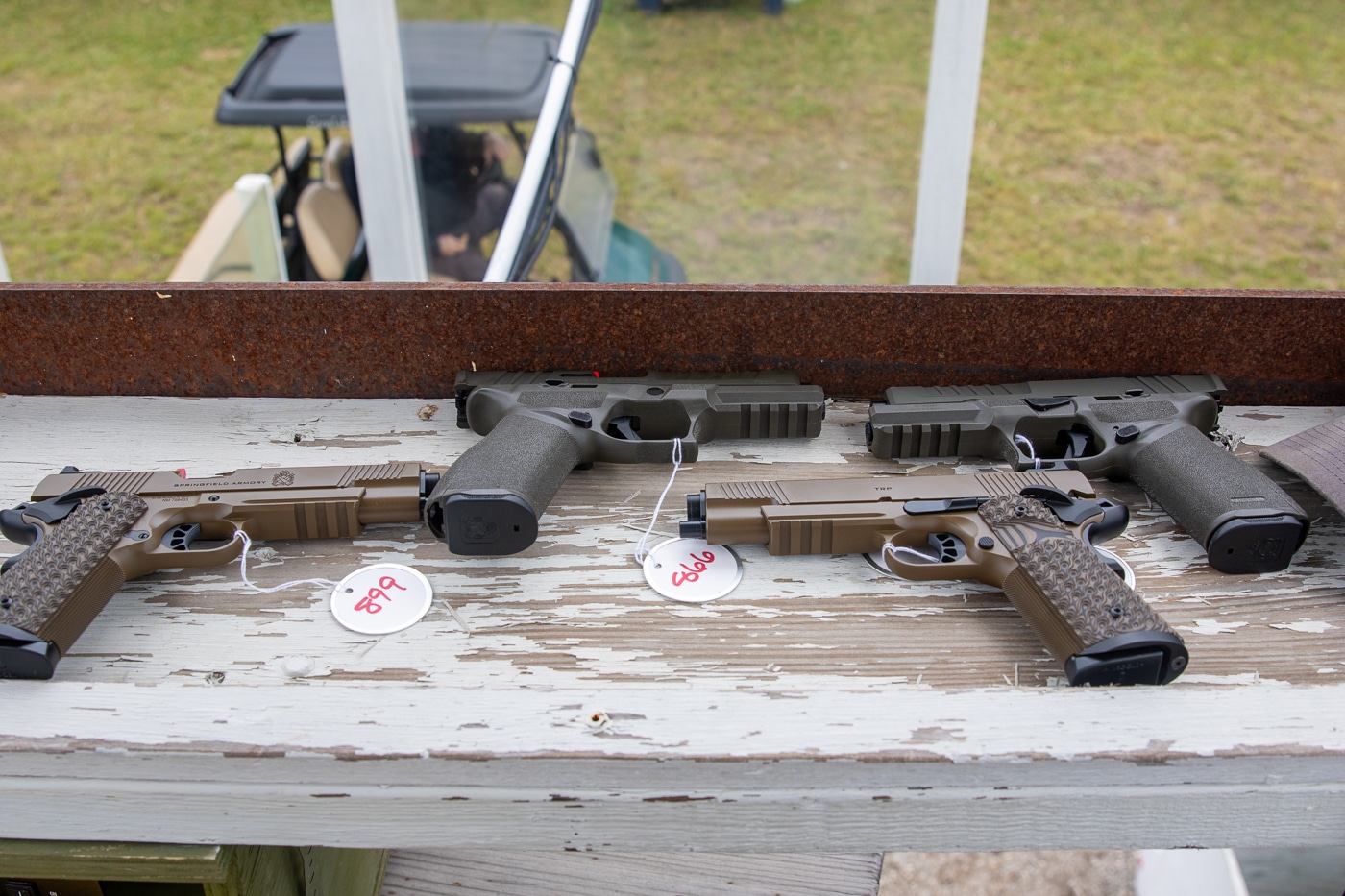
The MB finals come down to two top shooters, both of whom have been open winners at the Pin Shoot in the past: Phil Farr and Pat Sweeney. In the end, Phil’s custom 1911 sweeps the table faster than Patrick’s 1911.
The winners, Rex and Pharr, are each awarded a brand-new Springfield Armory TRP .45, their estimated value around two thousand dollars apiece. Second place prize is also brand-new pistols — Echelons.
Conclusion
Sixty-some registered contestants and the several dozen members of the audience all seem to be wearing smiles. The event has run smoothly and ends on an upbeat note.
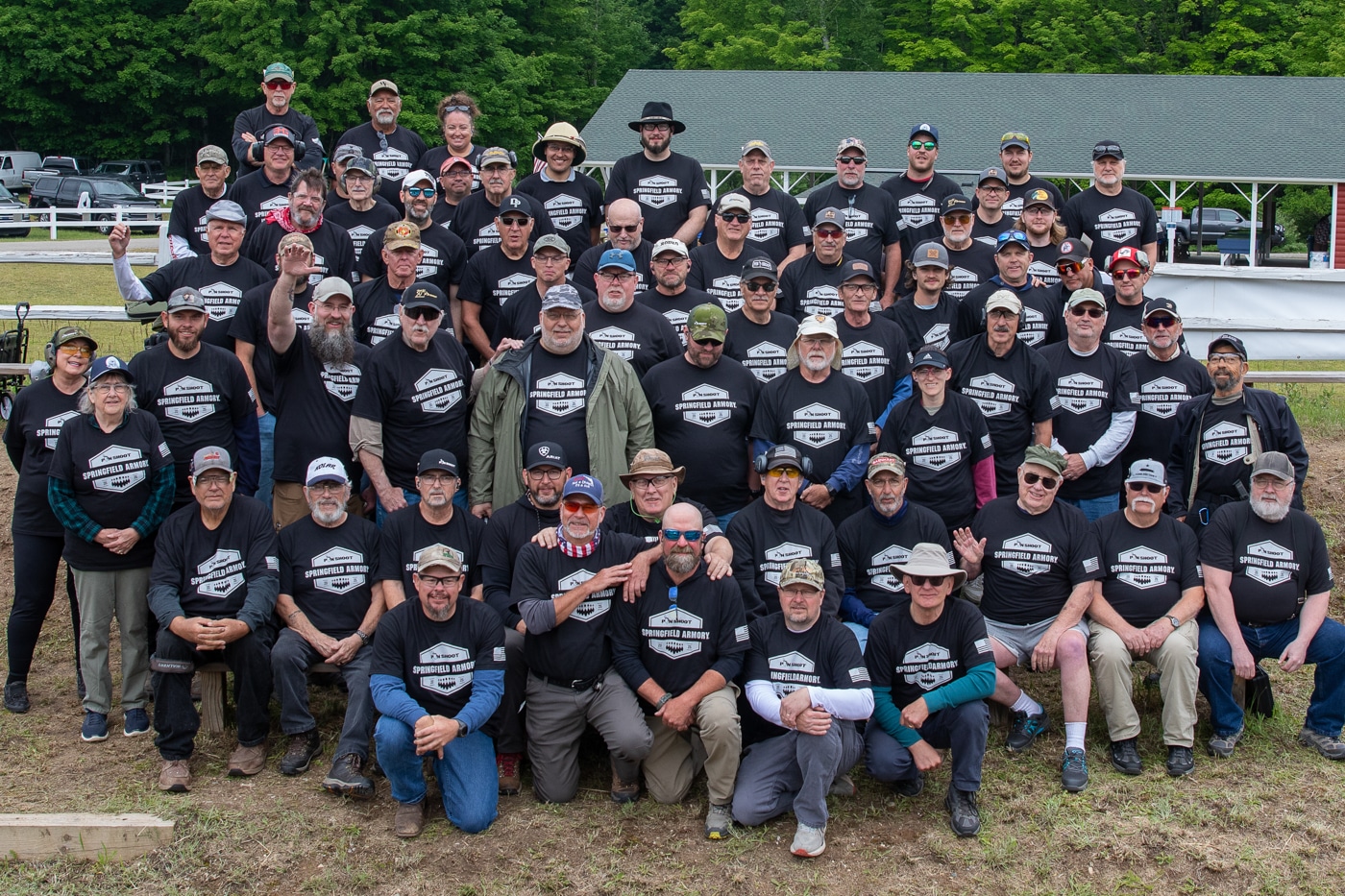
Every contestant is wearing their special black Springfield Armory Pin Shoot tee-shirt, which will doubtless be seen in future matches around the country. Everyone expects a repeat of the Shootoff on or about the second week of June 2026. I look forward to it.
Editor’s Note: Please be sure to check out The Armory Life Forum, where you can comment about our daily articles, as well as just talk guns and gear. Click the “Go To Forum Thread” link below to jump in and discuss this article and much more!
Join the Discussion
Featured in this article
Read the full article here




